Badlands? Why would you name a national park bad-lands? Well, the Oglala Lakota People were the first to name this site. They originally called this area “mako sica,” which translates to “land bad.” When French fur trappers traveled through, they called the area “les mauvaises terres à traverser” or “bad lands to travel across.” Rugged pinnacles, jagged buttes, and eroding canyons make up the landscape. Dry land with limited access to drinkable water, freezing, snowy winters, and sticky land after a rainstorm make this national park horrendous to navigate.
With 244,000 acres of sprawling grasslands, astonishing geologic deposits, and one of the richest fossil beds in the world, Badlands offers ample opportunities to explore. Home to bison, bighorn sheep, prairie dogs, and more, you’ll feel like you’re on an American Safari as you travel through this park.
Where is Badlands National Park?

Badlands National Park is located in the southwestern corner of South Dakota. It contains about 244,000 acres located on Oglala Lakota land. The Southern Unit of the park is still managed by the Oglala Lakota Tribe. The park is about an hour east of Rapid City and close to Black Hills National Forest, another popular tourist destination in South Dakota.
Badlands National Park Facts

● Badlands became a national monument in 1929 named in honor of the Lakota People. It later became a national park in 1939. Interestingly, when it was first first proposed as a national park in 1922, the suggested name was Wonderland National Park.
● About 75 million years ago, The Badlands were covered by the sea. As water dried up, sediment was left behind. The land changed from sea to subtropical forest to open savanna. Wind and water erosion carved the valleys and spires leaving behind the current day Badlands. ● The sedimentary rock is continuously eroding by water and wind at a rate of one inch per year.
● There are about 1,200 bison in Badlands National Park.
● The black-footed ferrets, which used to thrive across the Great Plains, nearly went extinct in the 20th century. They were reintroduced to the park and are currently making a comeback.
Getting to Badlands National Park

Badlands National Park is located about an hour east of Rapid City, right off of I-90. From I-190 N get on I-90 E. From I-90, take exit 110 onto SD-240 E in Wall. Continue on SD-240 into the park.
Badlands National Park Weather

Weather in the Badlands can be unpredictable and vary drastically throughout the year with intense heat, rain, hail, and snow. Check the weather before visiting to best prepare. Summer is easily the hottest and busiest time of year to visit. Hiking during the day can be difficult and dangerous as temperatures can reach over 100 degrees. If you choose to visit in the summer, a drive-through visit to viewpoints during the day and early morning and evening hikes are the best options. The best time of year to visit is during the spring and fall (April to May and late September to early November). Both have mild temperatures and are less crowded than the summer. Rain and hail storms are frequent in the spring, so be prepared for that. Winter temperatures are often freezing and it snows a lot. Wildlife is often hiding and road conditions are risky.
Badlands National Park Hours

Badlands National Park is open year round, 24 hours a day, 7 days a week, weather permitting. Winter conditions such as snow and ice can result in road or park closures. Call 605-433-5361 for the most up to date information.
Badlands National Park Entrance Fee
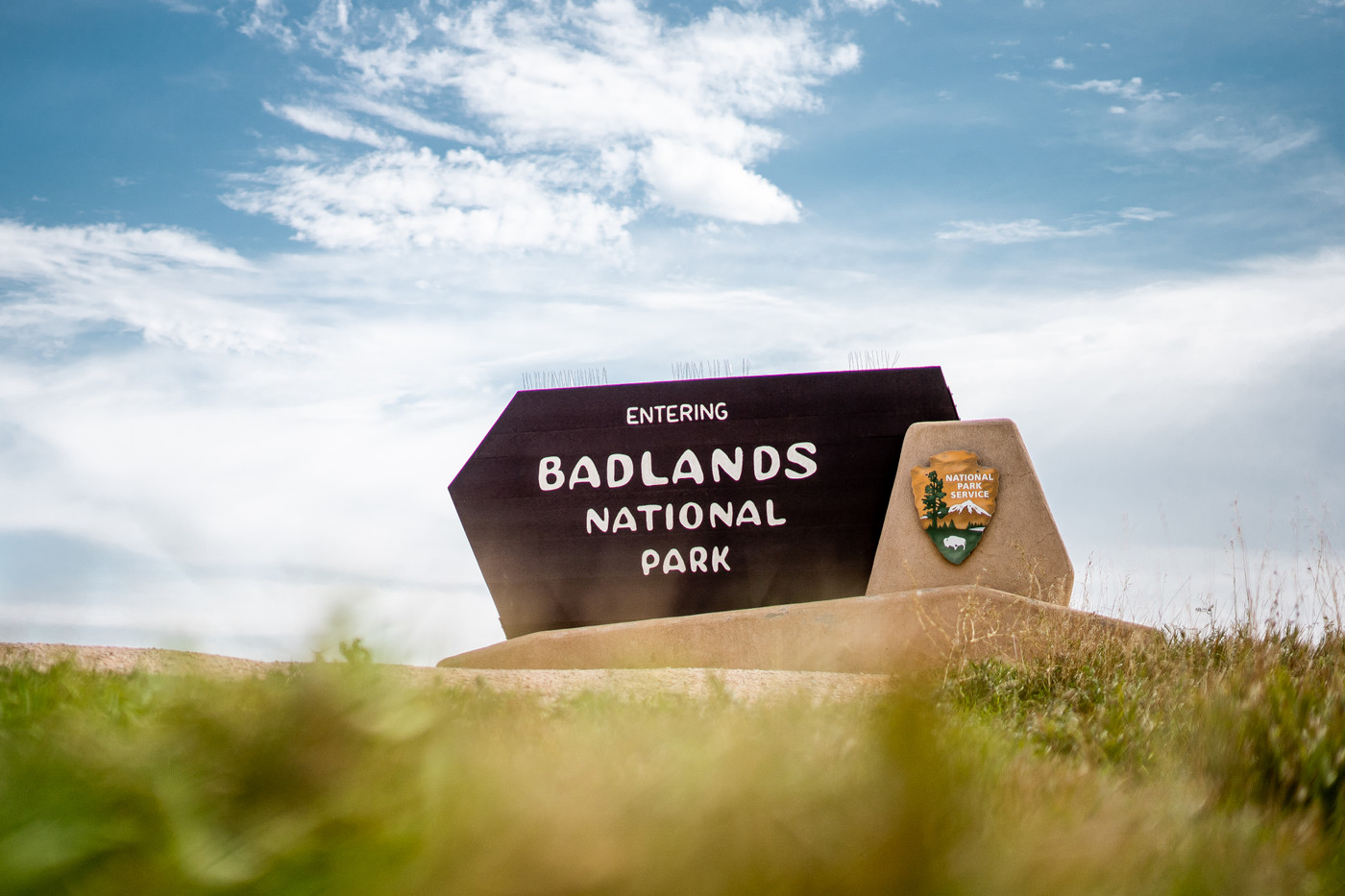
Park entrance fees are $30 a car, $25 a motorcycle, $15 an individual. All entrance passes are valid for 7 days upon arrival. An annual Badlands National Park Pass is $50 a year. An “America the Beautiful Pass,” valid for all National Parks, is $80 a year.
Hiking in Badlands National Park

Badlands National Park is an open hike park. This means you can hike off-trail while safely exploring wilderness areas. Respect wildlife and remain at least 100 feet away. Climbing up Badland formations is typically easier than climbing down. Make sure to pack out all trash and belongings and not take anything from the park.
Easy Hikes, Good for Families
- Window Trail (0.25 mi round trip)
- Door Trail (0.75 mi round trip)
- Fossil Exhibit Trail (0.25 mi out and back)
- Cliff Shelf Trail (0.5 mi loop)
Short, Moderate Hikes
- Notch Trail (1.5 mi out and back)
- Saddle Pass Trail (0.7 mi out and back)
- Medicine Root Trail (4.5 mi loop)
Moderate to Strenuous Long Hikes
- Castle Trail (10 mi out and back)
- Sage Creek Loop (22.8 mi loop)
Badlands National Park Lodging

Badlands National Park Camping
As an open hike park, Badlands permits backcountry camping everywhere in the park. Be sure to stay out of site and at least a half mile away from roads and trails. Due to changing conditions and possible restrictions at certain times of year, speak with a ranger before heading into the backcountry.
- Cedar Pass Campground
- Sage Creek Campground
- Medicine/Castle Trail Loop (Backcountry camping)
- Saddle Pass Trailhead (Backcountry camping)
- Badlands Interior Motel and Campground
- Badlands/White River KOA
- Sleepy Hollow Campground & RV Park
- Lake Park Campground and Cottages
- Minute Man RV Park and Lodging
- Rapid City/Black Hills KOA
Badlands National Park Hotels
If camping isn’t your thing, there are plenty of resorts, hotels, hostels, inns, cabins and B&Bs within a quick drive of Badlands National Park. Here are some of our favorites:
- Cedar Pass Lodge
- Frontier Cabins
- Circle View Guest Ranch
- Americas Best Value Inn Wall
- Econo Lodge
- Triangle Ranch Bed and Breakfast
- Super 8 by Wyndham Wall
- Creekside Lodge at Custer State Park Resort
- Badlands Inn
- GrandStay Residential Suites Hotel-Rapid City
Badlands National Park Airbnb
The area surrounding Badlands is sparsely populated, however, there are some unique Airbnbs nearby. Ranches, cabins, and small cottages immerse you in the South Dakota lifestyle. If none of these suit your fancy, there are Airbnb options in Rapid City, located about an hour from Badlands National Park.
Badlands National Park Tours
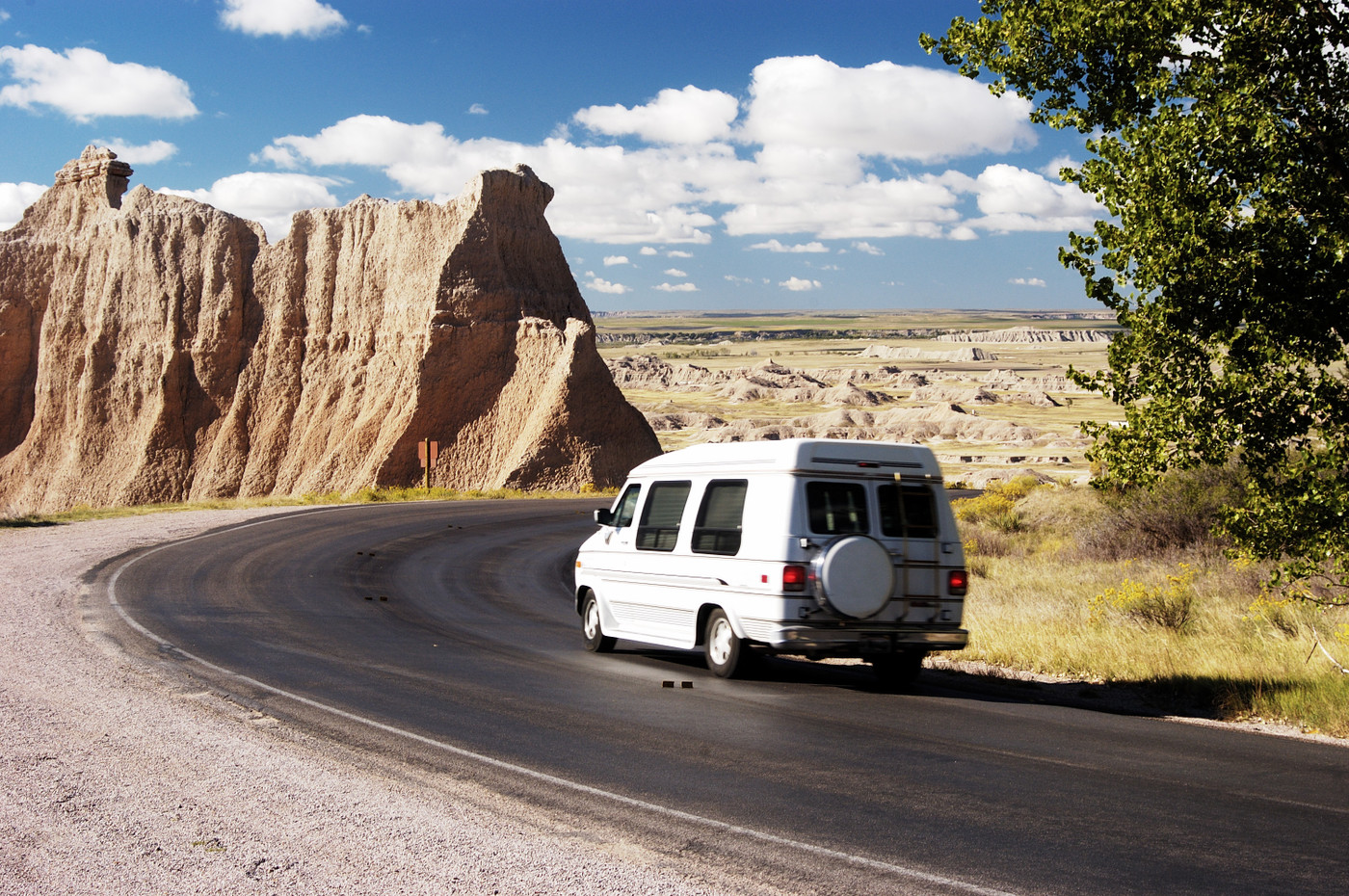
If you’re visiting Badlands on your own, join a ranger-led program to learn about the culture, science, and history of the park. Rangers meet at the Door Trail every morning at 8:00am for a walk through the Badlands geology. Fossil Talks are offered at 10:30am and 1:30pm everyday at the Fossil Exhibit Trail. Evening and night sky programs are offered throughout the summer and information about these can be found at the Ben Reifel or White River Visitor Centers. If you’re staying in Rapid City, book a tour with Black Hills Tour Company for a day trip to The Badlands. They offer day trips, sunset tours, and bike trips.
Best Things to Do in Badlands National Park
Drive the Badlands Loop State Scenic Byway

If you’re going to do anything at Badlands, be sure to drive this 39-mile loop between the towns of Wall and Cactus Flats. Even if you don’t have time to truly explore the park, this section of SD Hwy-240 is much more scenic than I-90 and offers many pullouts for picturesque overlooks.
Catch a Sunrise at Big Badlands Overlook
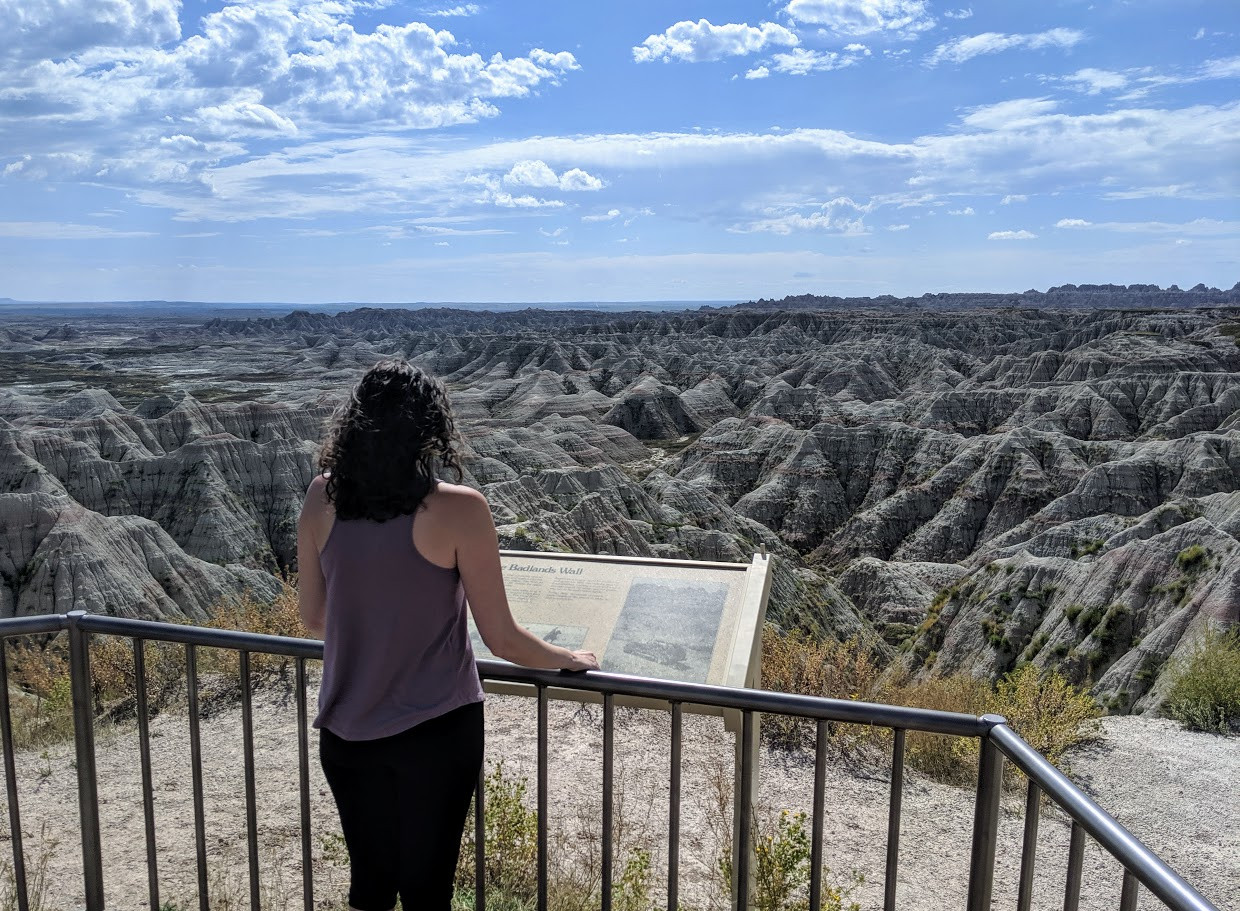
This is the first viewpoint along the eastern entrance into the park. The early morning and late evening offer the best lighting to enjoy the rock colors.
Photograph a Sunset at Pinnacles Overlook
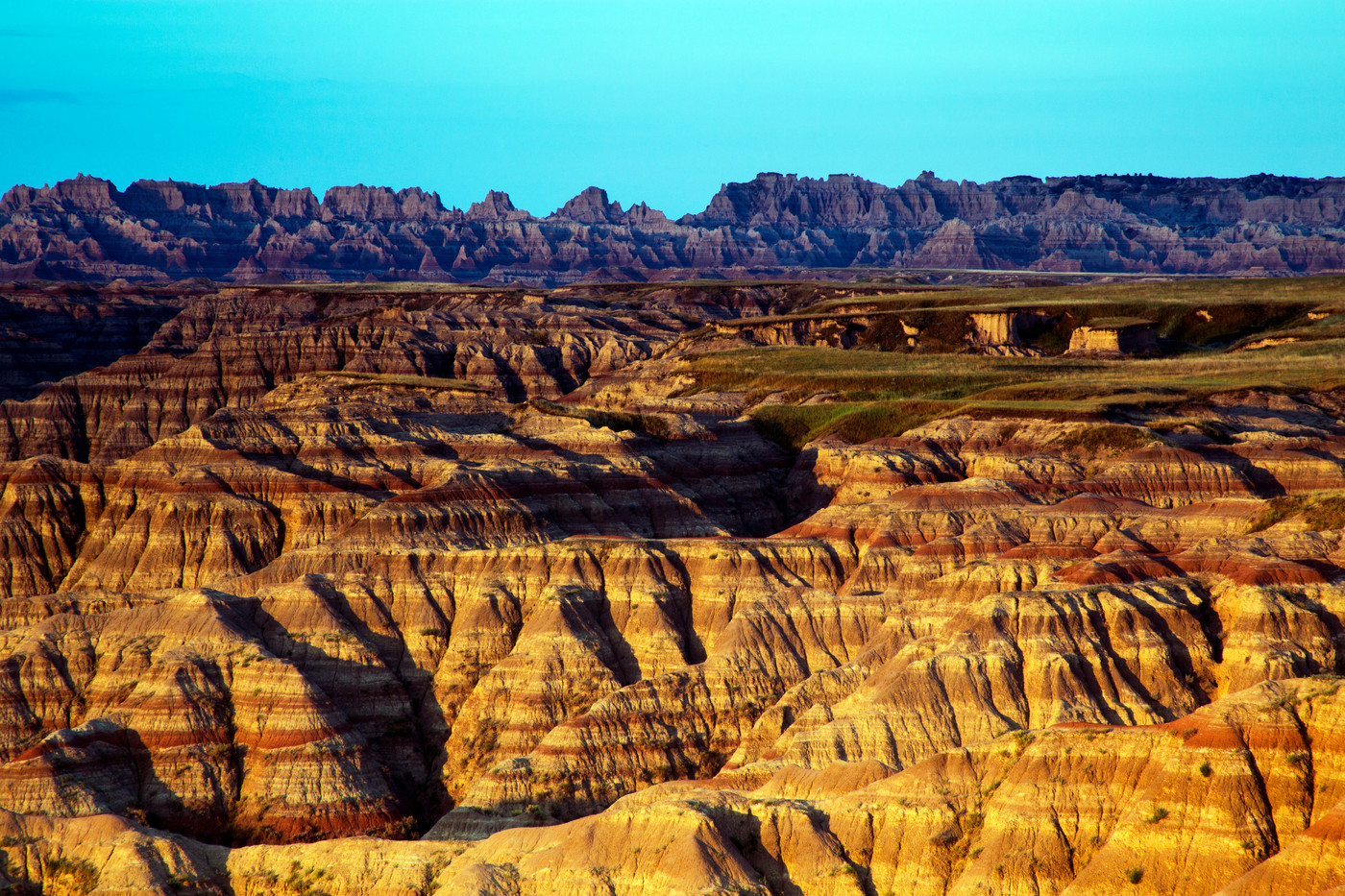
Once again, the lighting at sunset helps bring out the varying colors in the rock making Pinnacles Overlook a beautiful site to photograph.
Go on an American Safari Drive Along Sage Creek Rim Road

This mixed-grass prairie road overlooks the Badlands Wilderness. It is home to countless freely roaming bighorn sheep, bison, pronghorns, and prairie dogs.
Hike the Notch Trail

At Notch Trail, climb up a log ladder, follow canyon edges, and enjoy the views of the White River Valley. With a steep ladder and drop-offs, this hike is not for the faint of heart, however, the scenery makes it worth it.
Hike the Castle Trail
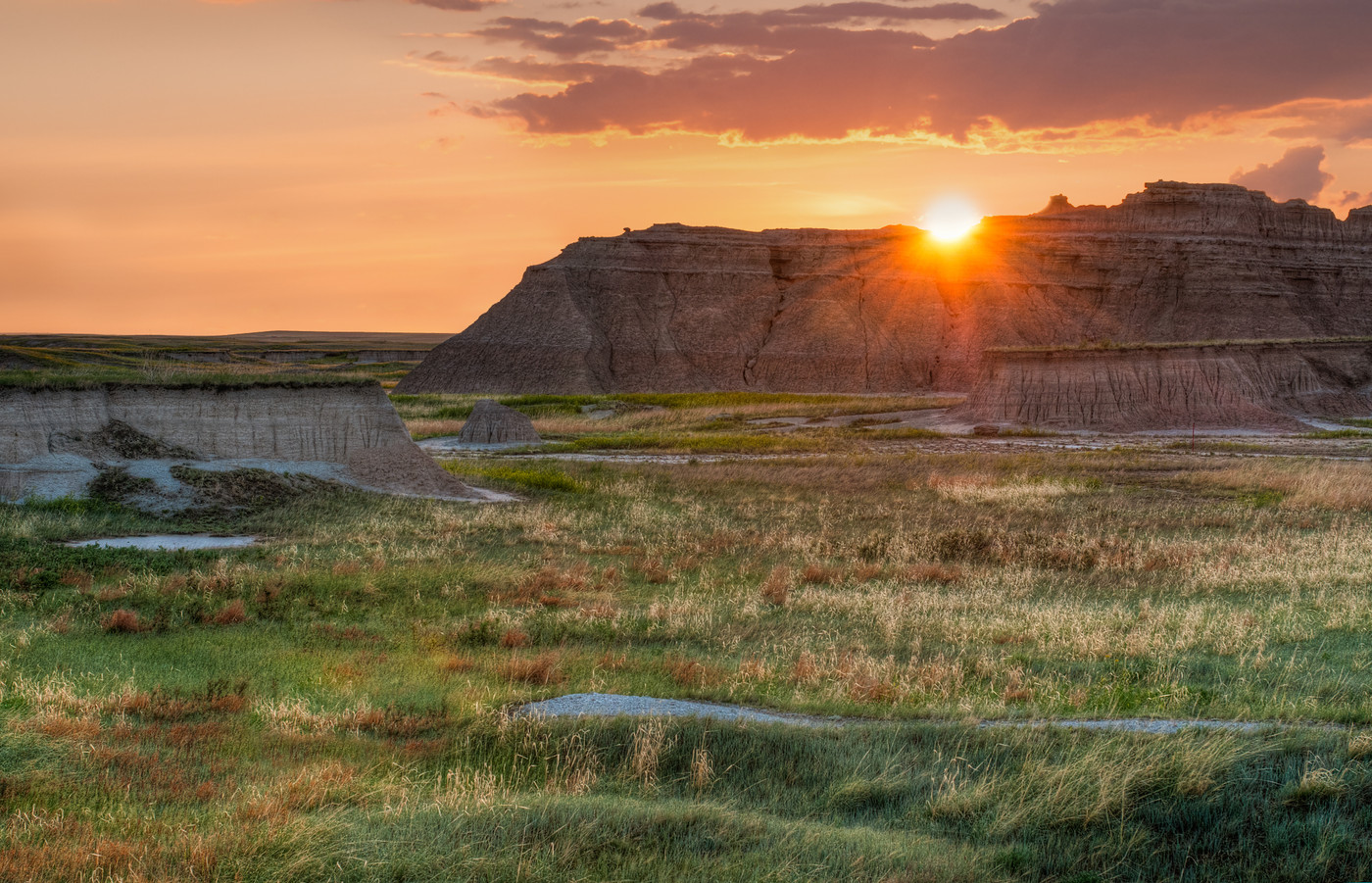
Looking for a longer, moderate hike, with impressive views of a variety of formations? Castle Trail is a 5 mile one-way, or 10 mile round-trip, hike that shows you some of the best Badlands has to offer.
Visit Roberts Prairie Dog Town

Known as the “Pipsqueaks of the Prairie,” prairie dogs are members of the squirrel family. Robert’s Prairie Dog Town is the largest in the park and a perfect spot to safely observe them. More than likely you’ll hear their high-pitched squeaks before you see them!
Explore the Fossil Preparation Lab
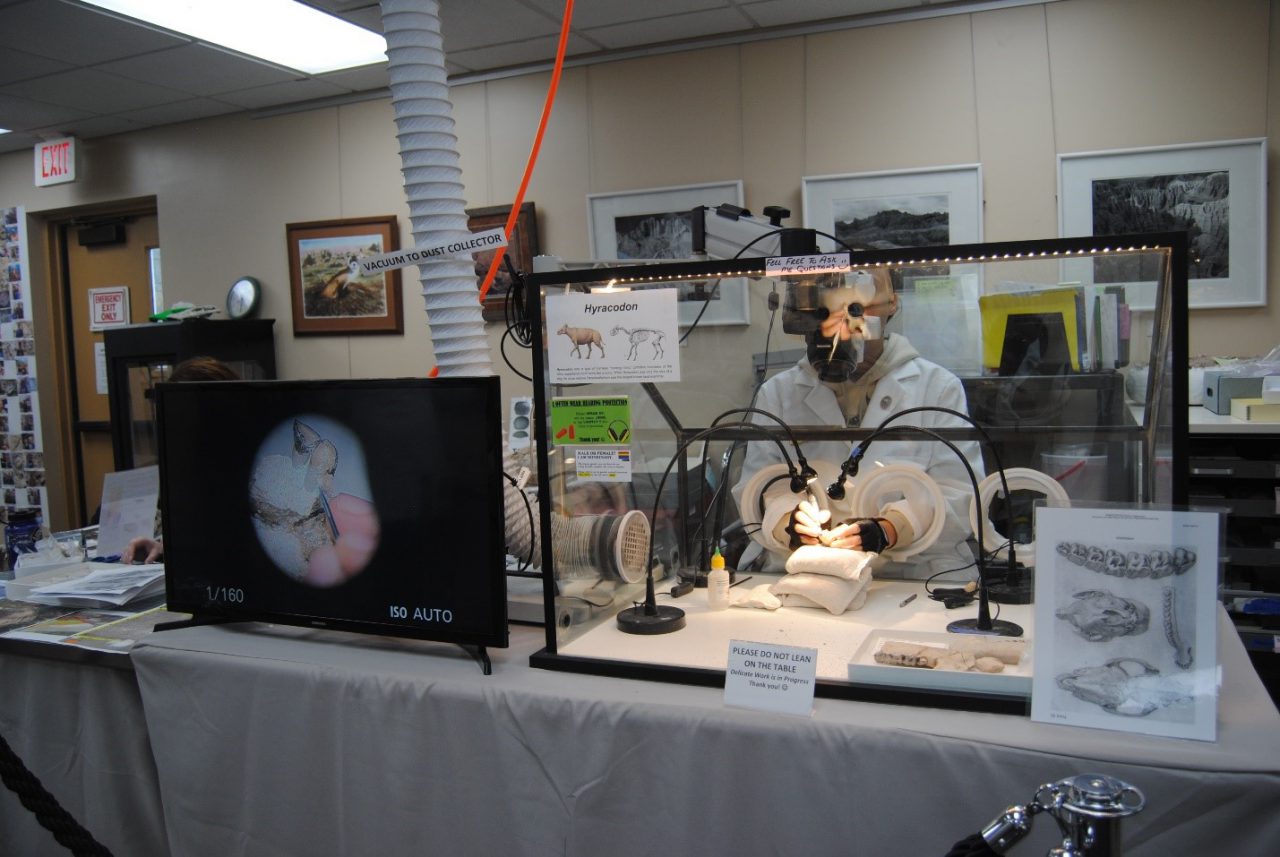
With Badlands being the home to one of the richest fossil beds in the world, observe and engage with paleontologists as they work on fossils found throughout the park at Badland’s Fossil Preparation Lab.
Adventure around Sheep Mountain Table

Located in the south unit of the park, Sheep Mountain Table offers impressive views in a less visited area. Four wheel drive and high clearance are a must to make it very far along this road! Avoid this road after rain or snowfall as the terrain is easy to get stuck in.
Go Stargazing
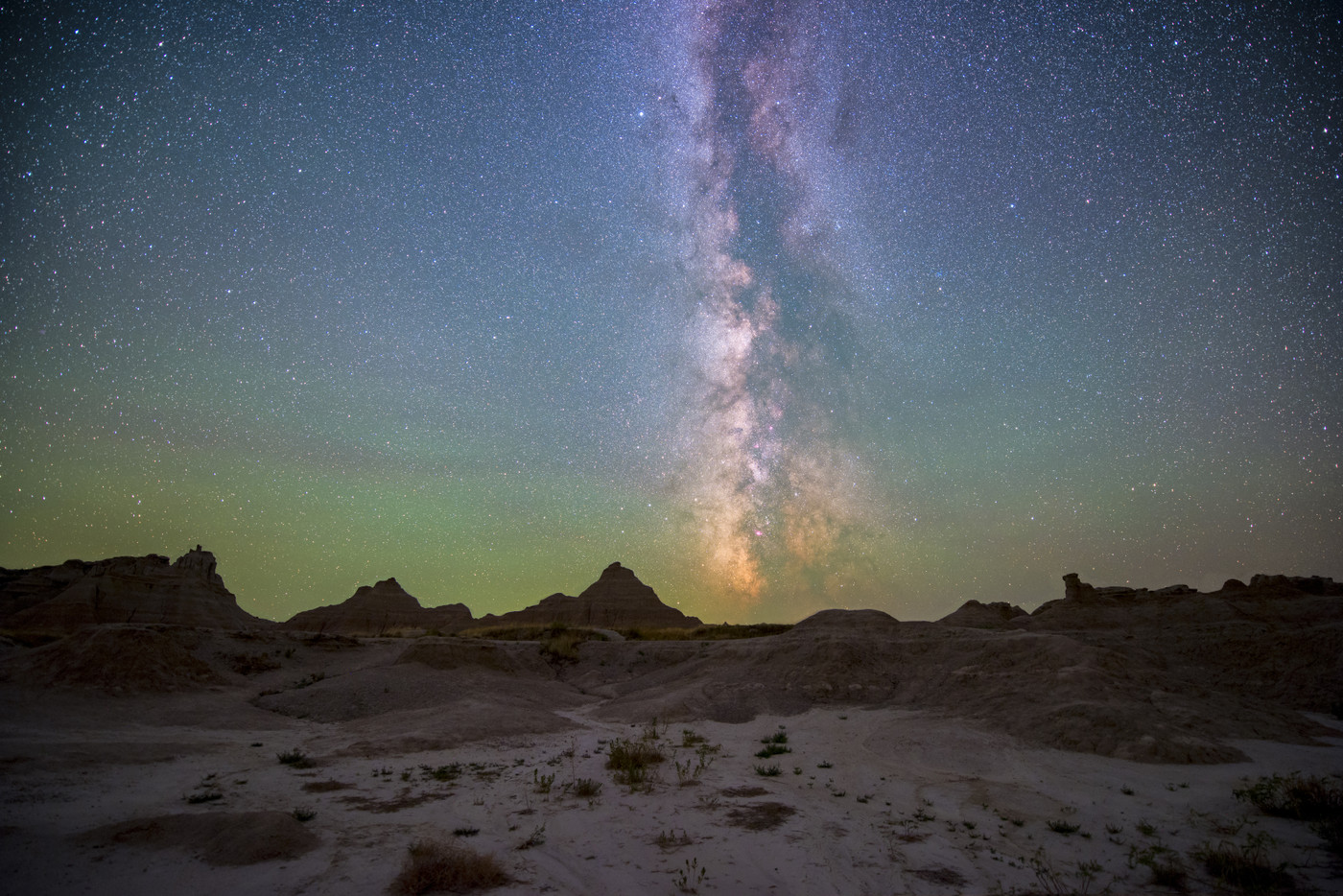
As night falls, the unpopulated area of Badlands makes for the perfect opportunity to enjoy the stars. The park offers Night Sky Viewings led by park rangers and astronomy volunteers to educate guests about the sky.
Explore the Fossil Exhibit Trail

Fossil Exhibit Trail is a flat, long boardwalk that features plaques describing animals that used to inhibit The Badlands.
Prairie Homestead
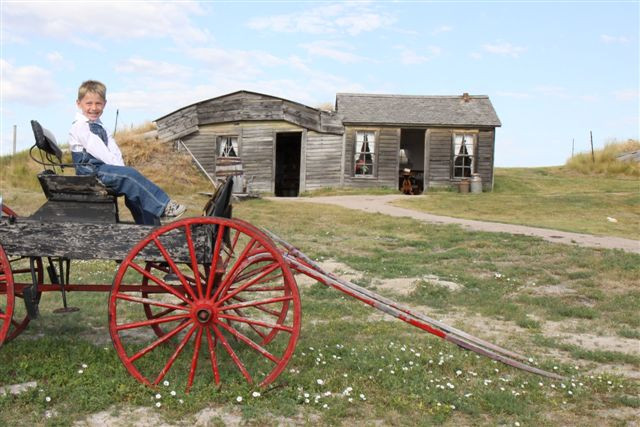
Located just outside the park, check out this early 1900s sod house built with sod bricks and a grass roof. Explore what life was like for an early pioneer passing through South Dakota.
Grab a Donut at Wall Drug
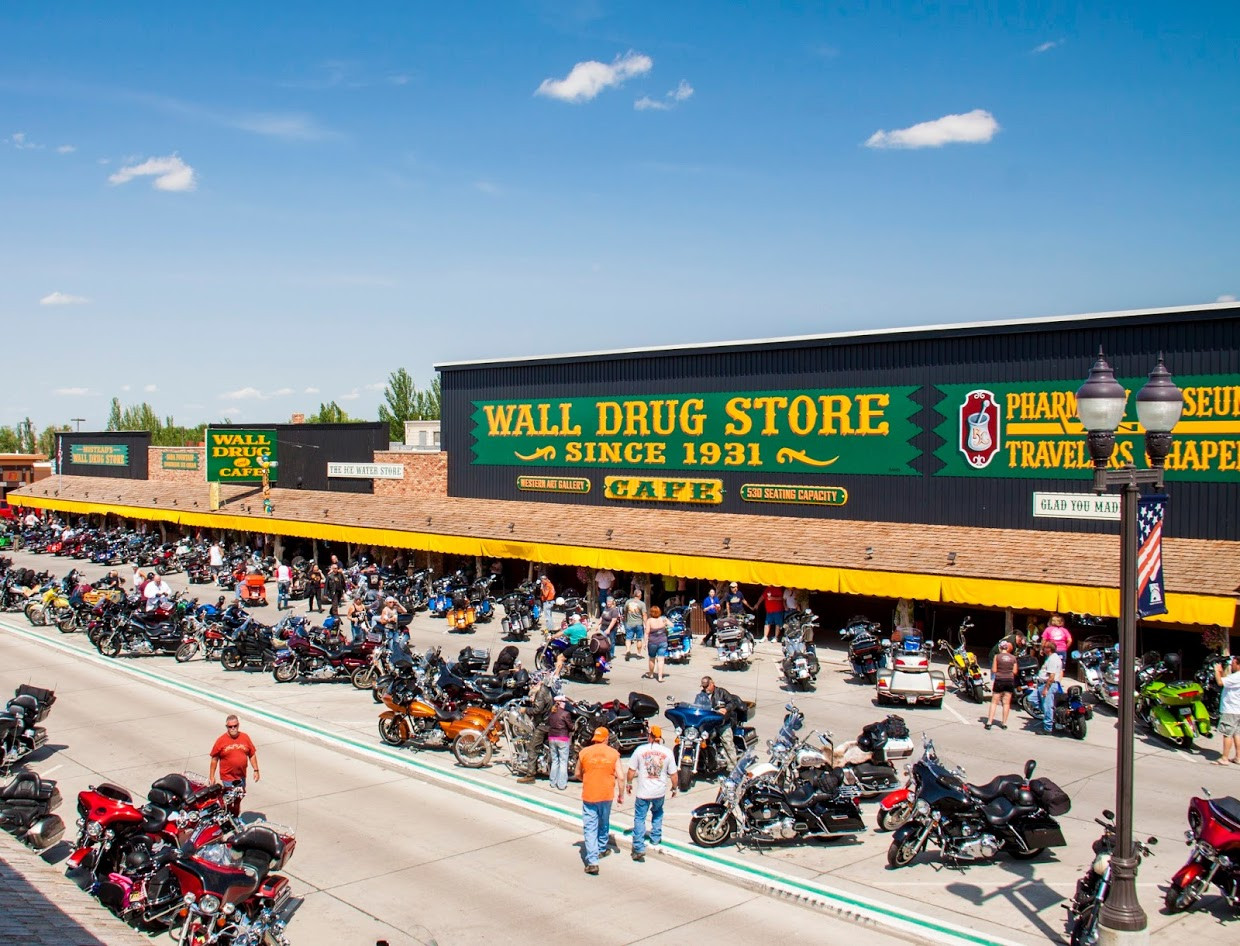
The famous Wall Drug is a 76,000 square foot drug store/gift shop/eatery has everything you can imagine and more.
Visit Custer State Park

Just over an hour from Badlands National Park, Custer State park has more adventure and wildlife. Swim, kayak, or fish at one of the park’s five lakes or go hiking along the Cathedral Spires Trail.
Explore the Black Hills
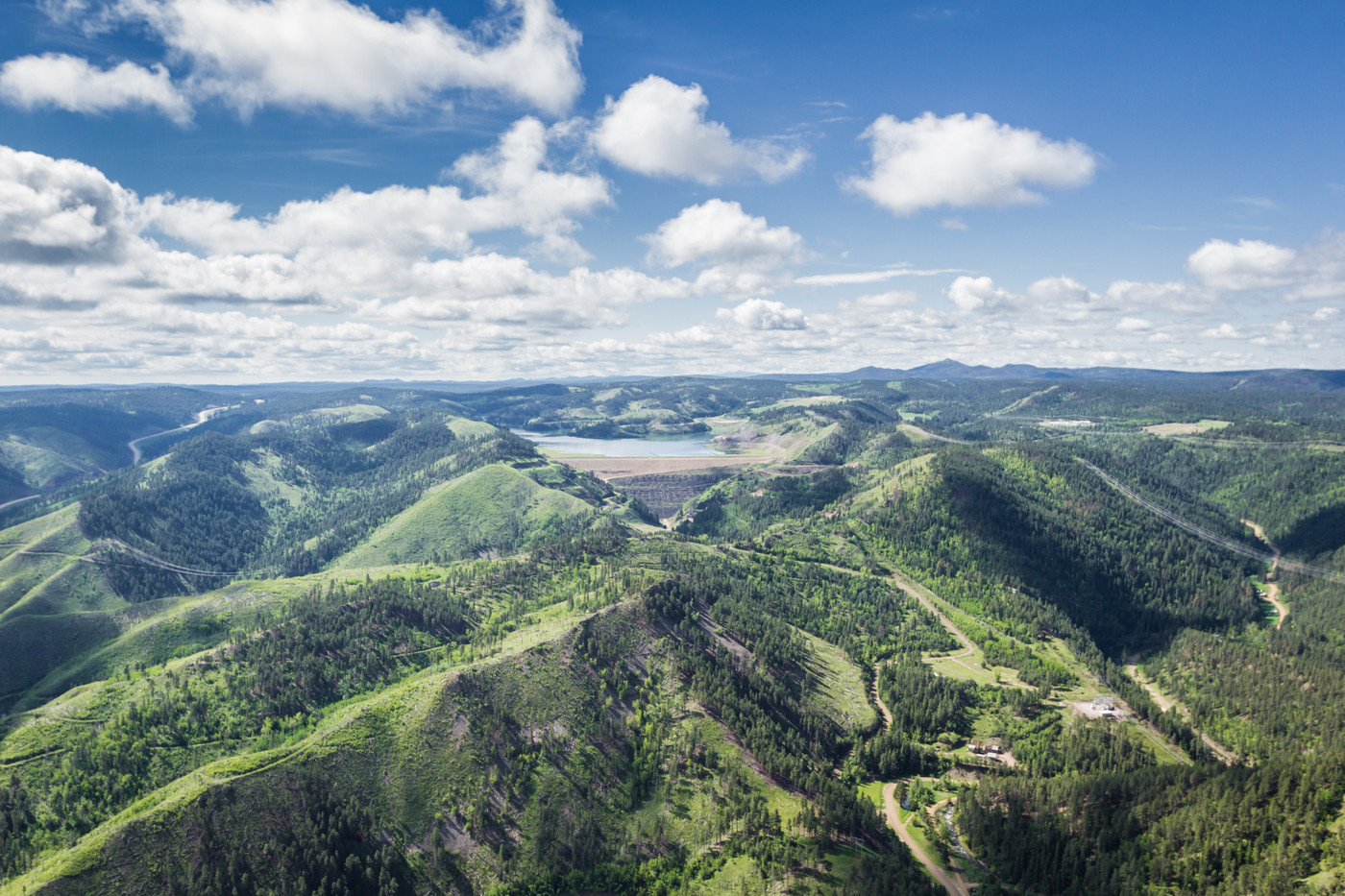
This national forest is about two hours east of Badlands. It includes a scenic byway, Black Elk Wilderness, Mount Rushmore, and Crazy Horse Memorial.